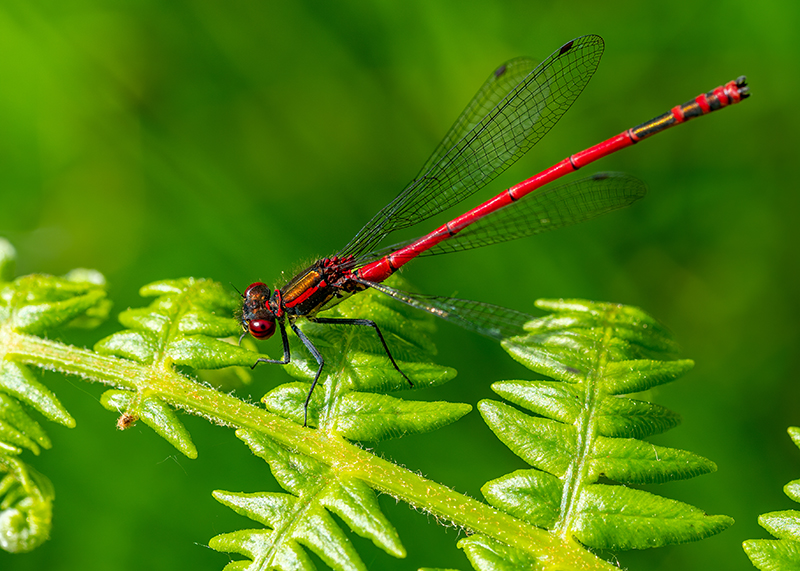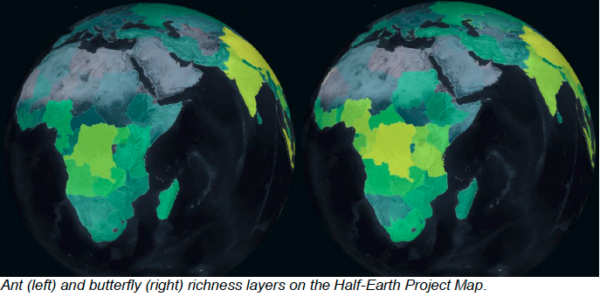



Country-level checklist data for ants, butterflies, odonates, and sapindales were added to the map. This is the first time we have featured country-level data for species richness and is an important step towards mapping these groups in greater detail.
A comprehensive and comparative approach to understanding species presence in checklist data can enable identification of habitat overlap between countries through the use of species checklists.
The global diversity patterns of dragonflies and damselflies can be used to identify taxonomic and spatial shortfalls in a time of increased biodiversity point data and has implications for freshwater habitat management and conservation.
What’s next for the Half-Earth Project Map? Our scientists, researchers, and designers are working on a new global ant richness layer, and a new irrecoverable carbon layer to add to the map. For the later, this is the first time that the global distribution of ants has been mapped.
References.
Sandall, Pinkert, Jetz. (2022). Country-level checklists and occurrences for the world’s Odonata (dragonflies and damselflies). https://doi.org/10.1111/jbi.14457
Kass, Guenard, Dudley, et al. (2022). The global distribution of known and undiscovered ant biodiversity, https://doi.org/10.5061/dryad.wstqjq2pp

